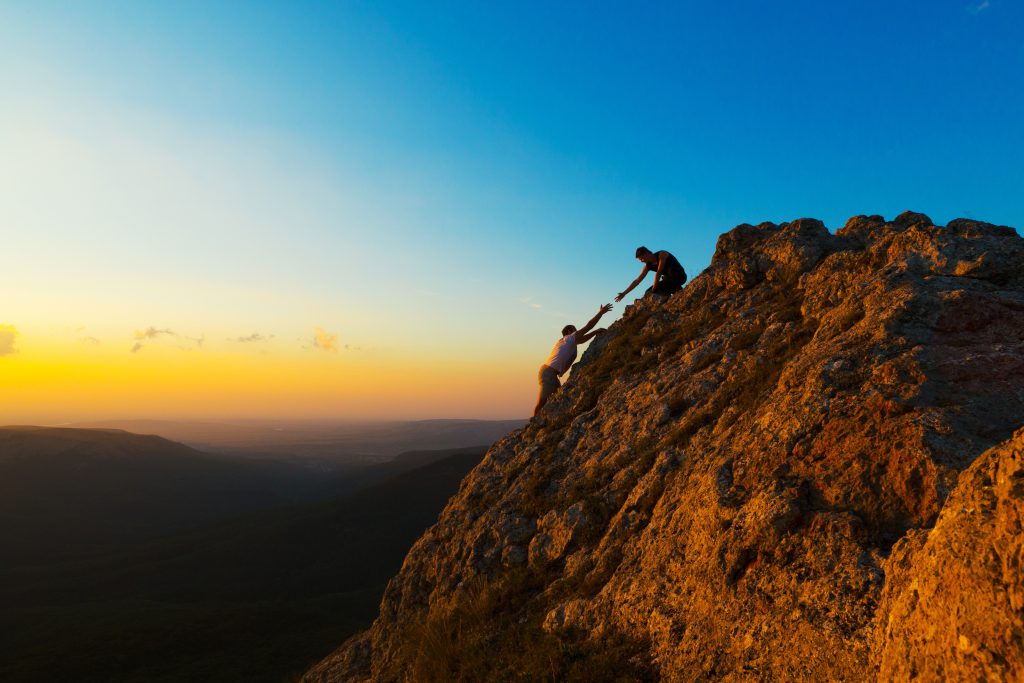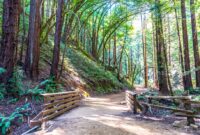Mountain climbing near me opens up a world of adventure, offering thrilling challenges and breathtaking views right on your doorstep. This guide explores local climbing options, detailing essential gear, safety procedures, and community resources to ensure a safe and rewarding experience. We’ll delve into the specifics of planning your climb, from selecting the right mountain based on your skill level to understanding potential hazards and mitigating risks.
Whether you’re a seasoned climber or a beginner taking your first steps up a mountain, we provide comprehensive information to help you navigate the local climbing scene. From finding suitable trails and understanding accessibility to mastering essential safety techniques and connecting with local climbing communities, this guide is your complete resource for mountain climbing adventures close to home.
Safety Procedures and Risk Mitigation
Mountain climbing, while exhilarating, presents inherent risks. Understanding and mitigating these risks is paramount to ensuring a safe and successful climb. Proper planning, equipment usage, and knowledge of climbing techniques are crucial for minimizing potential dangers.
Potential hazards encountered during mountain climbing are numerous and varied. Weather conditions can change rapidly, bringing sudden storms, freezing temperatures, and reduced visibility. Wildlife encounters, while often infrequent, can pose a threat, especially with animals feeling threatened or protective of their young. The terrain itself presents challenges, ranging from loose scree and exposed ledges to challenging ice formations and sheer rock faces. Furthermore, altitude sickness can significantly impair judgment and physical abilities, increasing the risk of accidents.
Safety Equipment Usage
Appropriate safety equipment is essential for mitigating risks. Ropes, harnesses, and helmets are fundamental pieces of gear. Ropes provide crucial protection during falls, and their proper use, including knot-tying and belaying techniques, is critical. Harnesses distribute the force of a fall across the climber’s body, preventing injury. Helmets protect the head from falling rocks and ice. Additional equipment, such as carabiners, slings, and ascenders, are used to create anchor points and aid in ascent and descent. The proper inspection and maintenance of all equipment before and after each climb are non-negotiable.
Navigating Challenging Terrain
Several techniques are used to navigate challenging terrain. Scrambling involves using hands and feet to ascend steep, rocky slopes. This requires careful footwork and handholds selection to maintain balance and stability. Traversing involves moving horizontally across a slope, often requiring the use of ropes and protection for safety. Rappelling, the controlled descent down a steep cliff or rock face using ropes, is a vital technique for safe and efficient descent. Proper instruction and practice in these techniques are essential for safe execution.
Weather Monitoring and Emergency Procedures
Thorough weather forecasting before and during a climb is critical. Changes in weather can significantly impact safety, necessitating the ability to adapt plans or retreat safely. Knowing the signs of altitude sickness, such as headache, nausea, and dizziness, is crucial. Understanding emergency procedures, including the use of communication devices and first-aid knowledge, is essential in case of an accident or unexpected event. A well-defined emergency plan, including pre-arranged communication with a base contact, is an integral part of a safe climb.
Local Climbing Communities and Resources
Connecting with local climbing communities is crucial for accessing valuable information, finding climbing partners, and enhancing your overall climbing experience. These groups often organize events, share knowledge about local climbing areas, and advocate for responsible climbing practices. Furthermore, engaging with these communities provides opportunities to learn from experienced climbers and build a strong network of fellow enthusiasts.
Local climbing communities offer a wealth of resources beyond just social interaction. They provide access to valuable information regarding climbing areas, safety protocols, and permit requirements, often exceeding what can be found online. They are a vital resource for both novice and experienced climbers alike.
Local Climbing Clubs and Groups
Several organizations in the area cater to climbers of all skill levels. Direct engagement with these groups is highly recommended for up-to-date information and local insights.
- The Granite Geckos Climbing Club: Contact: [email protected]; Website: www.granitegeckosclimbing.com (Example website and email – replace with actual local club details). This club organizes regular climbing trips, workshops, and social events. They also maintain an online forum for members to discuss climbing routes and share information.
- Summit Seekers Climbing Collective: Contact: [email protected]; Website: www.summitseekersclimbing.org (Example website and email – replace with actual local club details). This group focuses on bouldering and offers introductory courses for beginners.
- Vertical Ventures Climbing Club: Contact: [email protected] (Example email – replace with actual local club details). This club primarily focuses on mountaineering and ice climbing, organizing more advanced expeditions.
Guided Climbing Tours and Lessons
For those seeking professional instruction or a guided experience, several companies offer climbing tours and lessons tailored to different skill levels and preferences.
- Peak Performance Guiding: This company (example – replace with actual local company details) provides guided climbs for various skill levels, from introductory rock climbing to advanced mountaineering expeditions. They offer personalized instruction and ensure client safety.
- Summit Adventures: This organization (example – replace with actual local company details) specializes in multi-day climbing trips, often including backcountry camping and wilderness skills training. They cater to experienced climbers looking for challenging climbs.
Permit and License Information
Obtaining necessary permits and licenses is crucial for responsible and legal climbing. Requirements vary depending on the specific location and type of climbing.
Information on permits and licenses can typically be found on the websites of local parks and recreation departments or land management agencies. It is always advisable to check with these authorities directly before embarking on any climb. Failure to obtain the necessary permits can result in fines or legal repercussions.
Illustrative Examples of Local Climbing Experiences
This section details three distinct climbing routes readily accessible to local climbers, highlighting their unique characteristics, difficulty levels, and estimated completion times. Each description aims to provide a vivid picture of the visual experience, emphasizing the geological formations, vegetation, and overall landscape.
Eagle Peak Ascent
Eagle Peak Ascent presents a challenging yet rewarding climb for experienced climbers. The route is approximately 4 miles long and boasts a significant elevation gain of 2,500 feet. The estimated climbing time, excluding breaks, is 6-8 hours, depending on fitness levels and weather conditions. The initial ascent traverses a steep, rocky slope, offering stunning views of the valley below. As the climb progresses, the vegetation transitions from dense forest to sparse alpine shrubs, culminating in a breathtaking panorama from the summit. The rock faces are predominantly granite, offering varied holds and requiring careful route finding. The final pitch to the summit involves a short but exposed scramble across a narrow ridge, demanding both technical skill and mental fortitude. The overall visual experience is one of stark beauty, with contrasts between the lush green valley and the barren, rocky peak.
Whispering Pines Traverse
This intermediate-level route, approximately 3 miles long, offers a more moderate climbing experience. The elevation gain is approximately 1,500 feet, and the estimated climbing time is 4-6 hours. The route meanders through a picturesque pine forest, with the trail occasionally leading over gentle rock formations. The terrain is less steep than Eagle Peak, and the rock is generally less exposed. However, careful footwork is still essential, as the trail can be uneven and slippery in certain sections. The visual experience is dominated by the calming presence of the tall pines, creating a tranquil atmosphere contrasting with the more rugged terrain. The dappled sunlight filtering through the trees casts an enchanting glow on the path, making this a visually appealing and relatively less strenuous climb.
Boulder Creek Bouldering
Boulder Creek Bouldering provides a unique experience for those who prefer shorter, more intense climbs. This area features numerous large boulders, offering a variety of bouldering problems ranging in difficulty from beginner to advanced. The estimated time spent bouldering can vary greatly depending on the chosen problems and the number of attempts, but a typical session might last 2-4 hours. The setting is visually stunning, with the boulders nestled amidst a lush creek bed. The rocks themselves are smooth, rounded granite, often covered with vibrant green moss and lichen. The water cascading over the rocks adds to the tranquil atmosphere. The visual experience is one of natural beauty and serenity, with the contrast between the smooth, mossy boulders and the clear, flowing water.
Challenging Section of Eagle Peak Ascent
The most challenging section of Eagle Peak Ascent is the final pitch to the summit. This section can be represented textually as follows:
“`
/\
/ \
/ \ <-- Narrow, exposed ridge
/______\
/________\
| | <-- Steep drop-off on both sides
|__________|
```
This section involves traversing a narrow ridge with significant drop-offs on either side. Climbers must carefully select their foot and handholds, maintaining balance and awareness of the exposure. The rock is relatively smooth in this area, requiring precise movements and potentially the use of specialized climbing equipment. The wind can also be a significant factor, adding to the challenge.
Last Point
Embarking on a mountain climbing adventure near you offers an unparalleled opportunity for physical and mental challenge, rewarding you with stunning vistas and a profound connection with nature. By carefully planning your trip, understanding potential risks, and utilizing the resources available, you can confidently experience the thrill of ascending local peaks. Remember to prioritize safety, respect the environment, and enjoy the journey!




